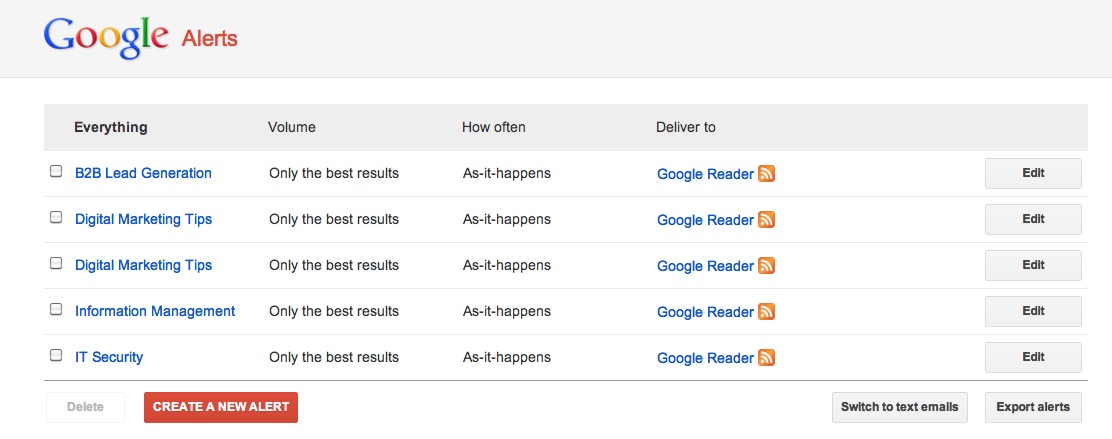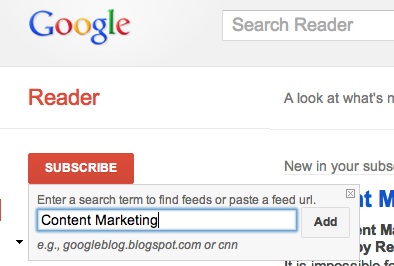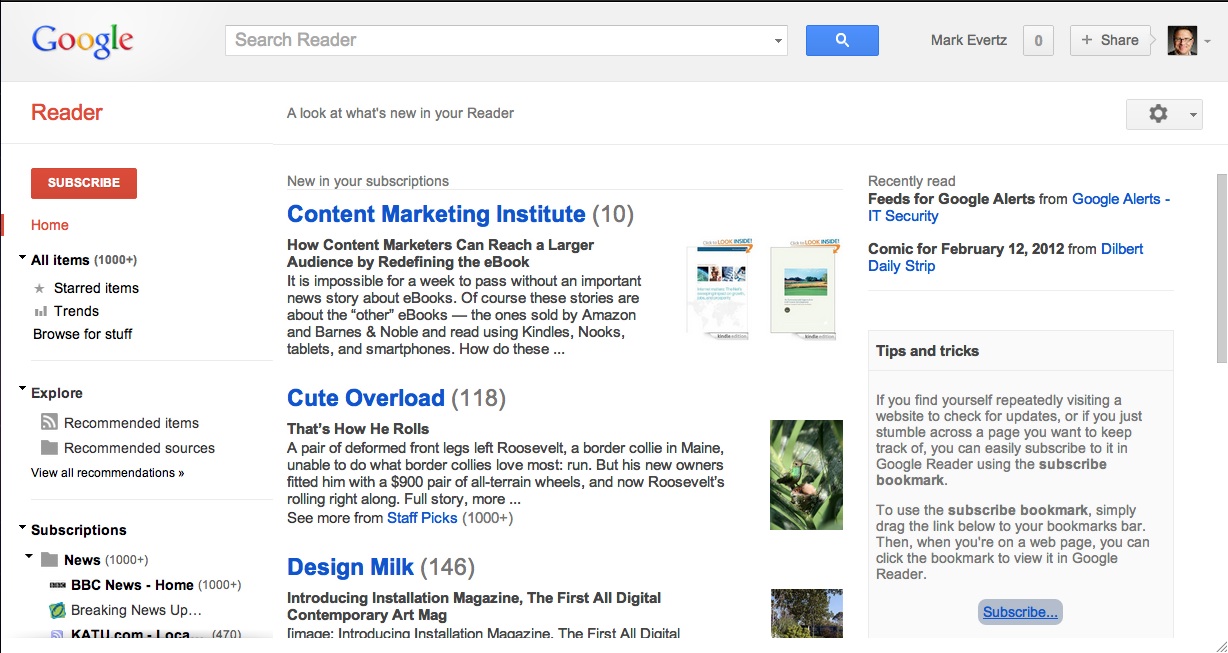

Without a doubt, the most common refrain I hear from businesses trying to adopt an
inbound approach to their marketing is that they just can't blog.
"I don't know how. Blogging's for young people. I'm not a good writer. I wouldn't even know how to begin. It's too hard."
Wow. How self-defeating, right? Well the truth is, I know any one of you -- yes,
even you -- can be an amazing
business blogger. You have all the tools you need to do the job, you just have to
recognize
that you have them. That's why I want to point them out to you. But
I'll warn you ... once you read this post, you're not going to have
those excuses left. You'll actually have to (gasp!) blog!
Are you ready for that? Alright, let me explain why you -- and anyone
else in your organization (seriously, the time for excuses is over) --
has the capacity to not only blog, but to also blog like a rock star.
1) You are a subject matter expert.
You didn't get where you are because of that pretty face of yours.
You have your job because you know how to do your job. That means if
your job is to provide customer support for an SEO software company, you
have the subject matter expertise to write a blog post like, "3
Advanced Hacks for Finding New Keywords for Your SEO Strategy." Or if
your job was to
sell that SEO software, you'd have the
knowledge to write a post like, "How to Use Search Trends to Identify
New Potential Markets." Or, if your job was to
market that SEO
software, you'd have the knowledge to write a post like, "How Long-Tail
Search Helps You Get Found Faster in Competitive Markets."
See what I mean? Whatever it is you do for a living, you are good at
it -- better at it than a lot of other people out there. The world wants
your expertise! Put it down on paper (or a computer, rather) so the
rest of the world can benefit. You probably don't think it's that
groundbreaking because the information is second nature to you, but if
you have leads and customers asking you these questions day in and day
out, there are hundreds -- if not thousands -- of people to whom your
knowledge
is groundbreaking. Do us a favor and blog it, won't you?
2) You're a good researcher.
Sometimes when you sit down to write a blog post -- even if it's
about something you know a lot about -- a tangential question might pop
up in your mind. One that you don't know the answer to. Some people see
these questions as indicators they should stop blogging, because they
must not be qualified enough to write on that topic. That couldn't be
further from the truth.
It's also why Google was invented.
Okay, not exactly, but you know what? Most business bloggers can
very rarely
sit down to write a blog post without conducting some research along
the way. I just scrolled back through the last five blog posts I wrote
for this very blog, and guess what? I had to conduct research for
each and every single one of them.
In fact, there are some blog posts that I sit down to write
specifically because they're a challenge, forcing me to talk to subject
matter experts in other departments within my organization.
Just because you don't know the answer to everything doesn't mean you
shouldn't be blogging -- it means you're like every other person in the
world, and certainly every blogger on the internet. The difference
between a good blogger and a bad blogger is, the good blogger recognizes
an information deficiency, and researches the correct answer to fill in
the knowledge gap. That's also what makes their content the go-to in
their industry!
3) You don't actually have to write that much.
People often get extremely hung up on word count. Great blog content
does not have to be long. In fact, it's usually better that it's brief
-- people don't like to read, and are often just scanning your content,
anyway. Give the people what they want! And, likely, what you want ...
namely, to be doing anything other than writing a blog post.
Now, this isn't to say you can write 100-word blog posts. Your
content still needs to be helpful, otherwise your readers (and Google's
crawlers) will stop showing you any love. Aim to keep most of your blog
content at a 500-600 word minimum so you have enough space to develop
some helpful advice. Of course, there will be occasional exceptions to
this rule. That's alright, as long as you keep up your reputation as a
provider of valuable content, regardless of length.
4) Sometimes, you don't even have to write at all.
Well, you need to have SOME words. But blogs are home to all sorts of
content other than the written word! For example, you might make your
blog posts more design focused if that's your forte -- one of our
in-house designers contributes his blog content to us in the form of
content visualizations, for instance.
Similarly, we have a fantastic "video guy" that, instead of writing
blog content, creates helpful marketing videos. Perhaps you'd rather
shoot a short video for your blog content, and then simply transcribe it
so you can get some of that nice SEO juice and cater to people who
prefer text, too?
But wait, there's more. Let's say you're more of a math geek. Why not
write content that focuses around the "mathy" (you might have figured
out that I am not one of those math people by now) side of your
business? For instance, our marketing operations folks use their super
powers with numbers to create blog content about how to perform
marketing calculations -- you know, the kind of content that would take
other people on the team twice as long to whip up. Take a look at Alison
Savery's blog post about
how to calculate and track a leads goal each month, for example.
This is all to say that blog content creation doesn't have to be all
about writing, writing, writing. If you cringe at the thought of
pounding out hundreds of words of blog content, remember that there are
other forms of content with very minimal writing that you have the power
to create -- and that
your audience will love.
5) You probably already have a lot of the content.
Sales and marketing collateral is everywhere. Whether it's in various
folders in your email, saved on your desktop, in printed brochures from
that trade show you sponsored, in old whitepapers you haven't promoted
in years, case studies you never quite put the final touches on -- for
most businesses, the content's there. It's just up to you to either
repurpose it, or if it's already looking pretty fly, to excerpt and
re-promote that content on your blog.
Here's a perfect example of doing just that -- and I know you can do the same. Several years ago, a HubSpotter created a
calculator in Excel
that helped people figure out what their monthly traffic and leads
goals should be. We promoted it once upon a time, but then it kind of
just ... fell off our radar. Well, one day, for some reason, we
uncovered it. And we decided to brush it off, give it a little makeover,
and re-launch the offer. And of course, we promoted it on the blog,
too! Now, we couldn't excerpt a section of the content like we would
with an ebook, so what did we write about in the blog post? We wrote
about how to use the Excel template! Take a look at a snippet from
the post:

It was a piece of cake to write -- you might notice it doesn't have a
boat load of text, all you writing-averse out there -- and it provided
helpful content. And it was all based off an Excel file from several
years ago!
6) It doesn't have to be Shakespeare.
In fact, it's better if it's not. Many marketers get caught up in the
idea of being a writer, but blogging doesn't have to be a creative
exercise; it can simply be a documentation of information. Instead of
trying to flower up your language, just focus on writing like you'd
speak. You'll find that content is not only easier to write that way --
most people don't have much trouble talking, after all -- but it sounds
more natural, too. That means your readers will enjoy reading it,
because it isn't some high falutin' content that tries to sound all
smart and fancy. It's just straight-forward, easy-to-get-through blog
content that answers their questions ... and maybe converts them into a
lead, while you're at it ;-)
7) There are proofreaders and editors in the world.
Remember, you're a subject matter expert -- that's the
biggest
value you bring to the role of business blogger. So if you're worried
that you can't blog because you're not good at figuring out where in the
sentence a comma goes, don't let that deter you; simply recruit a
grammar-savvy friend or coworker to look over your content for you
before it's published. A quick proof of a blog post takes no more than
10-15 minutes! You might also even download our handy
Internet Marketing Written Style Guide for some helpful reference.
If you're less concerned with grammar and punctuation, and have more
difficulty getting into "story-telling" mode, an editor might be for
you. Again, you have the subject-matter expertise to write the blog
post, you just might not have a knack for figuring out in what order
your information should be presented. If your blog posts have a ton of
juicy information, but they read a bit more like a brain dump, find a
colleague -- or even a freelance editor -- to help you sort out your
thoughts. You may also find that writing an outline before you start
blogging helps you establish a good order. In fact, most HubSpot
bloggers start with an outline
before they begin writing (it's
usually the big, bold subheadings you see in the published blog post) to
figure out what points should be hit in the post, and in what order.
Then when it comes to writing, they just fill in the blanks!
8) There are freelance writers in the world, too.
If you're really quite writing averse, your blog doesn't need to go
hungry. There are plenty of skilled freelance writers in the world who
make their living wordsmithing! I recommend a content marketplace called
Zerys
-- Often, the best approach
has been to seek out a writer with familiarity in the subject matter you
want to write about on your blog, and combining that with an edit from
you. Not for grammar, punctuation, or editorial guidance, but for your (say it again now)
subject matter expertise.
For instance, if we were to commission a blog post for our blog about
how email spam traps work from a freelance writer, I'd select a writer
with familiarity in
email marketing,
sending them a specific blog post working title, like "How Email Spam
Traps Work: A Guide for Marketers." I'd also recommend a word count --
say 600-700 words -- and if I had any documentation that would be good
to pull research from, I'd send that along, too. This all simply helps
set the writer up for success, providing direction and context. Then
when the blog post returned, I'd have one of the people at my company
who knows the most about how email spam traps work review the content
for accuracy, making any final tweaks or additions before publishing.
This kind of collaborative blogging approach typically yields the
best content, anyway, and it's an approach that's appropriate for both
small and enterprise level companies. There's no one that can know
everything about, well,
everything. Write about what you know,
and when you don't know it, ask the person who does for their take on
the subject. There should be a point-person, sure, or you'll suffer from
the 'Too Many Cooks in the Kitchen' syndrome, but if you stop blogging
in a silo, I think you'll find the whole endeavor is much more
manageable, and your content is far more valuable, too.
















 Create news alerts and deliver them to Google Reader.
Create news alerts and deliver them to Google Reader. Subscribe to a topic of interest to track.
Subscribe to a topic of interest to track. Create a news dashboard with key topics.
Create a news dashboard with key topics.





 Keep
your questions simple, straightforward, and concise. This will make it
easier for your survey respondents to understand exactly what you're
asking. It will also make it much easier for you to accurately analyze
your data.
Keep
your questions simple, straightforward, and concise. This will make it
easier for your survey respondents to understand exactly what you're
asking. It will also make it much easier for you to accurately analyze
your data. Another
reason the order in which you pose survey questions matters is that
survey takers have a tendency to want to appear consistent in their
responses. For instance, if you ask a person to put together a
controversial event announcement, then ask how much they enjoy event
marketing, they may be inclined to rate their interest lower if they
struggled to write it.
Another
reason the order in which you pose survey questions matters is that
survey takers have a tendency to want to appear consistent in their
responses. For instance, if you ask a person to put together a
controversial event announcement, then ask how much they enjoy event
marketing, they may be inclined to rate their interest lower if they
struggled to write it.
 A large number of survey researchers try to boost response rates by offering some sort of reward for completing a survey.
A large number of survey researchers try to boost response rates by offering some sort of reward for completing a survey.














